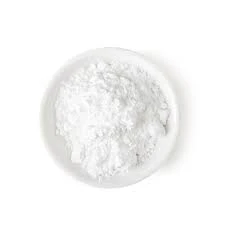Polyacrylamide Gel Electrophoresis A Comprehensive Overview
Polyacrylamide Gel Electrophoresis (PAGE) is a widely used analytical technique in biochemistry and molecular biology for the separation of macromolecules based on their size and charge. This technique is particularly significant for proteins and nucleic acids, allowing researchers to analyze complex mixtures, assess purity, and determine molecular weights.
Principle of PAGE
PAGE operates on the fundamental principle that charged molecules will migrate in an electric field. When a sample containing macromolecules is placed in a polyacrylamide gel and subjected to an electric current, molecules move through the gel matrix. Their movement is influenced by both their size and charge. Smaller molecules experience less resistance and migrate faster through the pores of the gel, while larger molecules are hindered, moving more slowly.
The gel is composed of polyacrylamide, a synthetic polymer formed from acrylamide monomers. The concentration of acrylamide can be adjusted to create gels with varying pore sizes, which is crucial for separating molecules of different sizes. For example, higher concentrations of polyacrylamide create smaller pores, making them suitable for separating smaller proteins, while lower concentrations allow for the separation of larger proteins.
Types of PAGE
There are two primary types of PAGE native PAGE and denaturing PAGE.
1. Native PAGE preserves the natural structure and function of proteins or nucleic acids. Under these conditions, the molecules maintain their native conformation, and separation is based primarily on size, shape, and charge. This method is useful for assessing the biological activity of proteins post-separation.
2. Denaturing PAGE, on the other hand, involves the use of denaturing agents such as SDS (sodium dodecyl sulfate) for proteins. SDS binds to proteins, imparting a uniform negative charge and unfolding them into linear shapes. Consequently, proteins are separated predominantly by size, as their shape and charge no longer influence their migration through the gel.
polyacrylamide gel electrophoresis pdf

Sample Preparation and Running Conditions
Effective sample preparation is crucial for successful results in PAGE. Samples must be treated to ensure complete solubilization and denaturation (if necessary). Additionally, it is essential to include a protein ladder or molecular weight marker in the gel to aid in estimating the sizes of the separated proteins.
The running conditions, such as voltage and running time, also play a critical role. Higher voltages result in faster migration but can cause heat generation, potentially leading to distortions in separation. Therefore, it is essential to optimize these parameters for the specific samples being analyzed.
Staining and Visualization
After electrophoresis, the gel must be stained to visualize the separated bands. Common staining methods include Coomassie Brilliant Blue and silver staining. Each of these methods has varying sensitivities and allows for the detection of different amounts of protein. Image analysis software can then be used to quantify the intensity of the bands, providing insight into the relative abundance of the separated molecules.
Applications of PAGE
The applications of PAGE are vast and varied. In research, it is employed to assess protein purity during the purification process and to analyze protein-protein and protein-nucleic acid interactions. It is also pivotal in diagnostics, such as the evaluation of biomolecules in clinical samples.
In summary, Polyacrylamide Gel Electrophoresis is a critical technique in modern biochemistry and molecular biology. Its ability to separate molecules based on size and charge, combined with its versatility in application, makes it an indispensable tool for researchers worldwide. Whether for the study of complex protein mixtures or for the assessment of nucleic acid quality, PAGE continues to be integral in the advancement of scientific knowledge and medical diagnostics.

